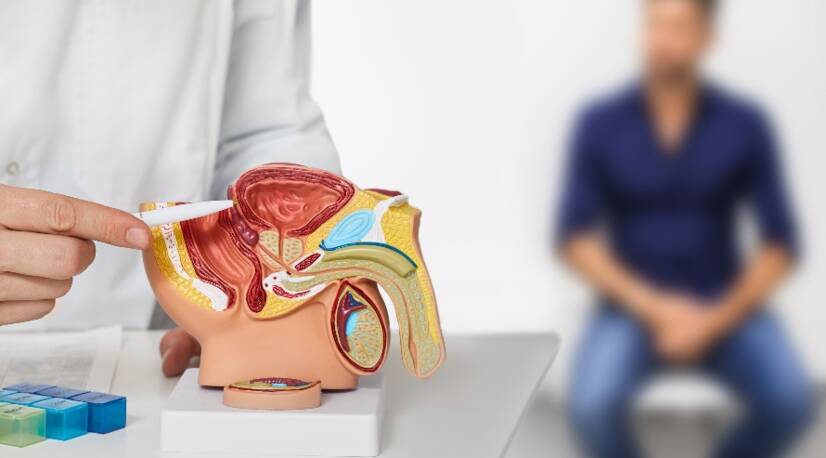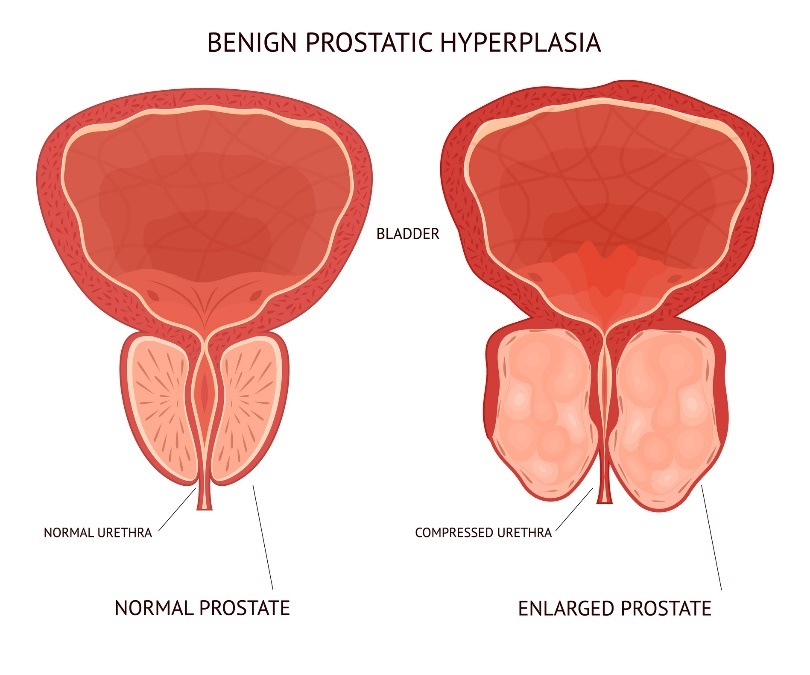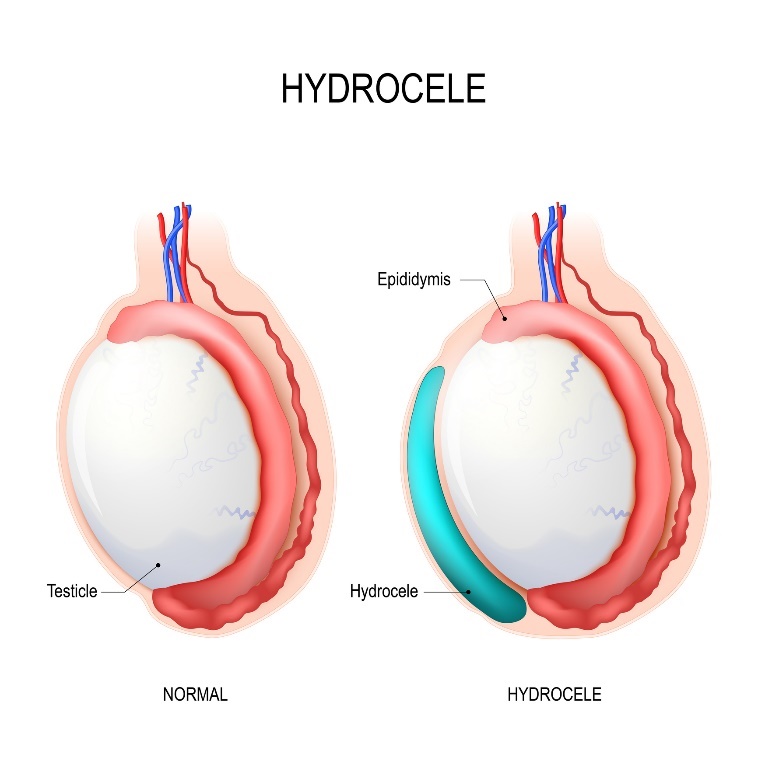- TESAŘ, Vladimír and Ondřej VIKLICKÝ, ed. Klinická nefrologie. 2nd, completely revised and supplemented edition. Prague: Grada Publishing, 2015. ISBN 978-80-247-4367-7
- medicalnewstoday.com - What to know about prostate cancer. Medical News Today. Teresa Hagan Thomas PHD, BA, RN
- solen.cz - Testicular tumors. Solen. prof. MUDr. Dalibor Ondruš, DrSc.1, RNDr. PhDr. Martina Cuninková
- healthline.com - Sexually Transmitted Disease (STD) Information for Men. Healthline. Joseph Vinetz, MD
Diseases of the male genital organs and their symptoms? + Venereal diseases

As with other internal systems, various health problems and diseases can occur in the male reproductive system. Some may affect sex life only temporarily, others, on the contrary, may signal a more serious problem. What are the different diseases of the genital organs in men?
Article content
The male reproductive system consists of external and internal organs. Their main function is the production of sex cells sperm and the ability to reproduce.
In connection with the male reproductive system, various diseases and temporary health disorders may arise during life.
Possible diseases of the prostate, testicles, penis, venereal diseases and many other interesting information can be found in this article.
Diseases can be divided into acute/chronic, infectious/non-infectious and according to the location of the health problem.
Due to the anatomy of the male excretory and reproductive system, urological and sexual health problems are often linked.
Diseases of the male reproductive system are manifested primarily by local soreness, inflammation, difficulty urinating, and erectile dysfunction.
Classification of diseases of the male reproductive system according to localization:
- Diseases of the prostate
- Diseases of the testicles and epididymis
- Diseases in the penile region
The following are common disorders and diseases of the male reproductive system.
Diseases of the prostate
Inflammation of the prostate
Inflammation of the tissues of the prostate can be both acute and chronic. Acute inflammation is mainly caused by bacterial infection, when the first symptoms appear quite quickly.
These are mainly pain during urination, a feeling of increased pressure in the lower abdomen, a decrease in the quality of erection and possible blood in the ejaculate.
Chronic prostatitis, on the other hand, is mainly caused by frequently recurring inflammation of the urinary tract and the progression of symptoms is slower. Symptoms include frequent urination, discomfort during urination and pain in the prostate area.
Disease and inflammatory process of surrounding tissues and organs may also be the cause of inflammation.
Treatment consists mainly of medical treatment with antibiotics, lifestyle modification and supportive pharmacotherapy to alleviate unwanted symptoms.
Non-malignant prostate enlargement
Non-malignant enlargement of the prostate gland is technically known as benign prostatic hyperplasia. It is a relatively common disease affecting men in old age. The prostate gland, with its excessive volume, presses on surrounding structures, especially the urethra and bladder.
Symptoms of prostatic hyperplasia can reduce the quality of normal life. These include frequent urination, incomplete bladder emptying, weak urine flow or incontinence (spontaneous leakage of urine).
Therapy for benign prostatic hyperplasia may consist of medication, lifestyle modification, regular health monitoring, non-invasive surgery or surgery.

Prostate cancer
Prostate cancer is one of the most common cancers in men. Its cause is not yet fully understood.
Risk factors include mainly increasing age, genetic influence, frequent infections and inappropriate lifestyle (lack of physical activity, unhealthy diet, alcohol, smoking, promiscuity).
In the early stages, the disease is often asymptomatic - asymptomatic. The first symptoms of prostate cancer include frequent urination, bedwetting, weak urine stream, erectile dysfunction and excessive fatigue or weakness.
Treatment for prostate cancer is based primarily on chemotherapy/radiotherapy and surgery. Supportive therapy is used to eliminate unpleasant symptoms.
Read also:
What is the prostate: What are the possible diseases + How to keep it healthy?
How to keep your prostate healthy
Varicocele
Varicocele is the technical name for an affection of the veins in the testicular area. The disease is quite common and professional treatment is required. In varicocele, there is a build-up of blood and dilation of blood vessels in the testicles.
Untreated varicocele can lead to a reduction in the quantity and quality of sperm and compromise fertility itself. Symptoms are mainly visible locally dilated and coiled veins, local pain, warmth and a feeling of increased pressure.
Treatment may consist of pharmacotherapy, vein sclerotherapy, non-invasive laparoscopic or surgical surgery. The exact type of treatment will be determined by the physician.
Hydrocele
Hydrocele is a disease affecting the testicles. Each testicle has protective sheaths around it, nourished by blood vessels. In hydrocele, fluid begins to accumulate between the testicular sheaths.
In younger boys, hydrocele is the result of the testicles descending from the abdominal cavity into the scrotum. In adults, the cause is mainly inflammation or trauma.
In most cases, hydrocele is not painful, but is manifested by visible enlargement of the scrotum and local discomfort due to the greater weight of the testicles.
Treatment of hydrocele is conservative, medical and surgical. Excess fluid in small amounts can be absorbed spontaneously over time.
For problematic hydrocele or excessive fluid, a minor surgical procedure is performed to remove (aspirate) the excess fluid.

Inflammation of the testicles and epididymis
Inflammation of the epididymis (the tissue directly above the testicle) is an uncomfortable medical condition often associated with severe pain. Testicular inflammation is technically referred to as orchitis.
The most common causes of the inflammatory process are bacterial infections. These are mainly urinary tract infections and sexually transmitted infections. Symptoms are swelling of the testicle, soreness and difficulty urinating.
In some cases, blood is present in the urine or ejaculate.
Treatment is mainly medical in the form of antibiotics and anti-inflammatory drugs. It includes monitoring of health and lifestyle modification.
Undescended testicle
Failure to descend one or both testicles is technically referred to as cryptorchidism. A non-descended testicle is defined as a testicle that has not moved from the peritoneal cavity into the skin sac of the scrotum.
In male newborns, this is a relatively common phenomenon that tends to correct spontaneously.
The risk factors for its occurrence are mainly premature birth, low birth weight and developmental disorders. However, if the testes do not descend outside the abdominal cavity within the first few months of life, the condition is corrected surgically.
Testicular cancer
Testicular cancer arises primarily in the sperm-forming cells of the testes.
The symptoms are mainly enlargement of the testicle and the presence of a lump. The aetiology is not yet fully understood, as is the case with other cancers.
Risk factors for the disease include genetic influences, developmental disorders, inflammatory processes, frequent infections, injuries and poor lifestyle.
Treatment depends on the exact stage and type of tumour. Radiotherapy, chemotherapy, surgery or supportive care is used. However, most often the entire testicle is removed. If the tumour has spread, the locally associated lymph nodes are also removed.
Diseases in the penile area
Phimosis
The foreskin (prepuce) is the layer of skin overlying the glans penis. Phimosis is a condition of narrowing of the foreskin. It is more common in young boys. Physiological relaxation of the foreskin occurs by the age of 3 years.
Thus, it is a condition in which the constricted state of the foreskin prevents it from being pulled over the glans. Phimosis in adulthood is mainly due to inflammatory or healing processes.
Phimosis can be alleviated by conservative pharmacological treatment and partial or complete circumcision of the foreskin.
Painful erections, uncomfortable intercourse and the risk of paraphimosis are also common.
Paraphimosis
Paraphimosis is an urgent condition in urology. It is a rather dangerous situation. The constricted foreskin is pulled over the glans but then gets stuck and cannot be pulled back to its original position.
Paraphimosis occurs in uncircumcised men. Treatment of paraphimosis consists of removing the swelling of the penis and returning the foreskin to its original position (conservatively pharmacologically, non-invasively and in more severe cases surgically).
Phimosis and paraphimosis (narrowing of the foreskin): what are its causes and symptoms?
Erectile dysfunction
Erectile dysfunction significantly affects the quality of sexual life, the psychological state and the fertility of the man himself. Erectile dysfunction means the inability to achieve and maintain an erection of the penis.
Erectile dysfunction is one of the most common sexual problems of men.
If this condition occurs sporadically, it is probably a reaction to a stimulus such as stress, overwork or illness. However, the problem arises when it is a continuous regular condition.
The cause of erectile dysfunction is multifactorial: cardiovascular disorder, penile blood flow disorders, psychogenic factor, inappropriate lifestyle, neurological disease, hormonal imbalance and many others. The exact cause and treatment of erectile dysfunction is determined by a urologist.
Premature ejaculation
Ejaculation is the discharge of semen (ejaculate) from the male sex organ during intercourse. Premature ejaculation can be characterized as a condition where intercourse lasts less than one minute.
Premature ejaculation occurs mainly in young men with little sexual experience. The cause of its occurrence can also be biological (hypersensitivity of the penile tissues and the ejaculatory reflex) and psychosocial (stress, relationship problems...).
Peyronie's disease
This is a disease of the penis. If left untreated, it can significantly impair the quality of normal life.
Peyronie's disease is a local disorder of the penile tissues in which inflammatory deposits form in the sheaths of the spongy bodies located in the penis. Plaque forms at the site of the disorder, which hardens and calcifies over time.
As a result, various curvatures and deformities of the penis may develop.
The disease is accompanied by pain, especially in the first stages. Treatment is possible with early diagnosis, including conservative, pharmacological and non-invasive treatment. However, in higher stages and with severe penile deformities, surgical treatment is necessary.
Priapism
In antiquity, Priapus was referred to as the god of fertility and sexual pleasure. His characteristic feature was a permanently erect genital organ. Hence the name of the disease priapism is derived from this name.
It is a condition of prolonged painful erection, but not associated with sexual desire.
The cause of priapism is multifactorial: vascular and hematological disorders, impaired blood supply to the penis, trauma, pharmacotherapy affecting erection, and others. This acute condition must be professionally addressed by a urologist.
Urinary tract inflammation
Just as inflammation of the prostate, testicles and other organs can occur, so can inflammation of the urinary tract, urethra and therefore the penis. Due to anatomical interdependence, diseases of the excretory system also manifest themselves in the male reproductive system and vice versa.
Most cases of inflammation are the result of a bacterial or viral infection. Frequent infections are just due to STDs (sexually transmitted diseases).
Symptoms include a burning sensation when urinating, itching and burning at the mouth of the penis, swelling of the penis, the presence of blood in the ejaculate or urine, painful ejaculation and enlarged local lymph nodes.
The origin of the infection, inflammation and the exact type of treatment will be determined by the urologist. It is necessary to treat the condition professionally to avoid the risk of spreading inflammation and health complications.
Sexually transmitted diseases in men
Sexually transmitted infections, abbreviated STDs (Sexual transmitted diseases), are infectious diseases transmitted during:
- sexual intercourse (vaginal, oral, anal)
- direct contact with infected blood and secretions
- from mother to child during pregnancy and childbirth
Sexually transmitted diseases can be divided into bacterial (syphilis, gonorrhoea, chlamydia...), viral (herpes, HPV + warts...), fungal(candidiasis) and parasitic(scabies) according to the causative agent.
Venereal diseases affect the genital tract, urinary tract and possibly other surrounding organs.
Common STDs in men include genital herpes, chlamydia, mycoplasmosis or cytomegalovirus.
Sexually transmitted diseases must be professionally diagnosed and treated by a doctor because of health complications and the risk of spreading infection. What are the risks of changing sexual partners? Sexually transmitted diseases
Common symptoms of STDs in men:
- Frequent urination
- Pain and burning during urination
- Itching in the genital area
- Painful ejaculation
- Burning sensation during intercourse
- Discomfort during intercourse
- Redness of the genital organs
- Skin rash in the genital area
- Enlargement of local lymph nodes
Prevention of STDs is primarily through protected sexual intercourse (condom), non-promiscuity, adequate personal and intimate hygiene and regular preventive check-ups with a urologist.
Interesting resources
Related










